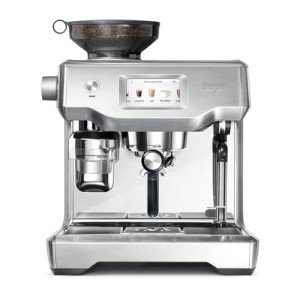Heat Exchange Espresso Machines: A Comprehensive Guide
Espresso machines have progressed significantly throughout the years, dealing with the needs of home baristas and coffee professionals alike. Among these machines, heat exchange espresso machines have gained popularity due to their ability to provide consistent efficiency and remarkable brew quality. In this short article, we will check out the operations, advantages, and essential functions of heat exchange espresso machines, supplying a thorough understanding for both potential buyers and coffee lovers.
Comprehending Heat Exchange Technology
Heat exchange espresso machines run on a distinct concept that allows synchronised water heating for developing and steaming. They are equipped with a single boiler that makes use of a heat exchanger system. This feature is considerable as it makes it possible for users to brew espresso while steaming milk simultaneously, promoting performance in the coffee-making procedure.
How Does a Heat Exchange Espresso Machine Work?
The procedure starts with the machine's water inlet filling the boiler. As Espresso Machines With Grinder warms up, it turns to steam. The ingenious heat exchanger utilizes hot steam to heat additional water in a separate passage created specifically for the brew group. This means that water can reach the ideal brewing temperature level without waiting on the boiler to change. The essential actions include:
- Water Fill: Water is drawn into the boiler.
- Heating Process: The boiler warms up as water is transformed into steam.
- Heat Exchange: Steam heats up water in the heat exchanger tube.
- Developing: Water from the heat exchanger is pushed through coffee premises, drawing out the tastes needed for a rich espresso.
This procedure allows for quick temperature changes and improved coffee extraction.
Benefits of Heat Exchange Espresso Machines
Heat exchange espresso machines use several benefits, especially for those wanting to maximize their coffee experience. Here are some essential benefits:
- Simultaneous Brewing and Steaming: Users can brew espresso while steaming milk, making it perfect for busy coffee shops and home baristas who value performance.
- Temperature level Stability: The boiler's steam pressure helps keep a stable temperature, which is critical for consistent espresso extraction.
- Versatility: The design enables for quick changing in between brewing and steaming, making it much easier to produce different coffee beverages, from lattes to cappuccinos.
- Easy to use: Models often include accessible controls, making it practical for both newbies and knowledgeable baristas to produce quality drinks.
- Professional Quality: Heat exchange machines are often utilized in commercial settings, providing users with high-quality brewing performance in your home.
Key Features to Look for in Heat Exchange Espresso Machines
When thinking about the purchase of a heat exchange espresso machine, there are a number of features that one should take into consideration:
- Build Quality: Look for machines made of resilient products, such as stainless-steel or brass, guaranteeing durability.
- Boiler Size: A bigger boiler will hold more water and sustain higher output in time.
- PID Temperature Control: This feature helps keep consistent brew temperature levels, which can boost the coffee-making process.
- Group Head Design: Machines with a saturated or semi-saturated group head offer better temperature level stability.
- Reduce of Use: User-friendly user interfaces and user-friendly controls improve the overall experience for baristas at all skill levels.
- Steam Wand Quality: A great steam wand with correct insulation and flexibility enables for better texturing of milk.
- Water Reservoir Size: Depending on your needs, think about how frequently you wish to refill the water reservoir.
Contrast of Popular Heat Exchange Espresso Machines
To better comprehend the alternatives readily available in the market, listed below is a contrast table of some popular heat exchange espresso machines:
| Machine Model | Boiler Size | PID Control | Cost Range | User Ratings |
|---|---|---|---|---|
| Profitec Pro 700 | 2.0 L | Yes | ₤ 2,000-₤ 2,500 | 9.5/ 10 |
| Rocket Espresso R58 | 1.8 L | Yes | ₤ 2,400-₤ 2,800 | 9.4/ 10 |
| Elekta Bianca | 1.8 L | Yes | ₤ 2,500-₤ 3,000 | 9.6/ 10 |
| La Spaziale S1 Vivaldi II | 1.5 L | Yes | ₤ 1,800-₤ 2,200 | 9.2/ 10 |
| Bezzera Magica | 1.2 L | No | ₤ 1,600-₤ 1,800 | 9.0/ 10 |
Frequently Asked Questions About Heat Exchange Espresso Machines
What is the main distinction in between a heat exchange and a dual boiler espresso machine?
While both types can brew espresso and steam milk at the same time, dual boiler machines have different boilers for brewing and steaming. On the other hand, heat exchange machines use a single boiler and a heat exchanger to accomplish the very same function.
Are heat exchange machines appropriate for novices?
Yes! Portable Espresso Machines are designed with easy to use features, making them accessible for novices. With appropriate assistance and practice, users can quickly produce quality espresso.
What sort of maintenance do heat exchange espresso machines require?
Regular maintenance includes descaling, cleaning up the boiler, inspecting seals and gaskets, and keeping the group head clean. Regular upkeep makes sure durability and constant performance.
Can I use a heat exchange machine for various types of coffee drinks?
Absolutely! Heat exchange machines allow users to develop a range of coffee beverages, consisting of espresso, lattes, coffees, and more.
Heat exchange espresso machines represent a mix of development and custom, offering coffee lovers with the tools required for crafting the ideal cup. Their capability to at the same time brew and steam, combined with precise temperature level control, makes them a compelling option for both home baristas and experts. With the right knowledge on functions and maintenance, users can open a world of beautiful coffee experiences, ensuring that each sip is as wonderful as the last.

